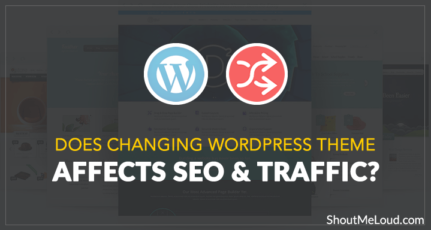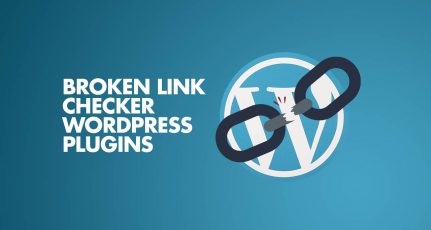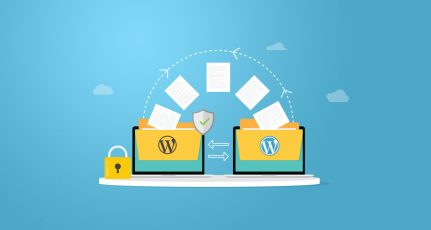
By improving your WordPress SEO you can quickly increase your website traffic and revenue.
The default installation of WordPress has better SEO than other counterparts, but there is a lot you need to do to improve the SEO of WordPress.
In this beginner’s friendly tutorial, I have shared everything you can do to optimizing your website for WordPress SEO.
How do I’m sure of that?
Well, ShoutMeLoud (this blog) runs on WordPress and we receive more than 1 million page views every month.

However, one thing that you should know, there are rumors that WordPress has the best possible SEO options. But this is not entirely true!
Let me elaborate.
WordPress is not SEO friendly.
At least, the default WordPress installation is not.
If you, like many others, believe that your stock installation of WordPress will get you excellent, or even good rankings on search engines, you are misinformed.
WordPress needs to be SEO optimized for search engine bots to understand your WordPress website and rank you appropriately. Luckily, making your WordPress blog SEO friendly is rather easy with the help of this guide and with combinations of WordPress SEO plugins.
Here, I will outline some of the default settings of WordPress which are not SEO friendly, and what you should do to make it SEO friendly.
Basics of WordPress SEO:
WordPress SEO can be categorized into 3 levels:
- On Page WordPress SEO
- On-Site WordPress SEO
- Off-site WordPress SEO
On page SEO and On-site SEO, are something that you can easily take care of with the help of your content, plugins, and a bit of discipline.
Off-Site WordPress SEO consists of generating backlinks to your website. This can be achieved by outreach, broken link building, or by utilizing other techniques.
In this guide, we are more focused on the On Page and On-Site aspects of SEO.
Let me explain these two with a simple example:
On Page SEO:
This technique will help you to optimize any post/page on WordPress for a target keyword. This helps the search engine understand what your content is about and help you rank for the right keyword. If you like to learn more about this, read our guide on On page SEO.
On-Site SEO:
These are more technical SEO settings where you help search engine bots effectively crawl and index your website. Factors like page speed, Robots.txt, and others play a major role.
Again, if you understand the basics with the help of this WordPress SEO tutorial, you will have no problem optimizing your WordPress website.
Getting the basics right:
Before we move into a more actionable part of our WordPress SEO guide, let us make sure our basics are strong.
Check WordPress visibility settings:
Login to your WordPress admin panel, and head over to settings > Readings, and ensure that the “Search Engine Visibility” setting is unchecked.
This is what it should look like:

A lot of times default WordPress installer keep this option checked, and this prevents search engine bots from crawling your website.
WWW Vs. non WWW:
Another important WordPress SEO question asked by many users is, to use WWW (https://domain.com) or non-WWW (https://www.domain.com) at the time of WordPress installation.
Search engine treats WWW and non-WWW as two different websites, so you need to pick one and stick to it. This could be configured at the time of setting up of WordPress, by going to Settings > General.

As of 2025, there is no SEO benefit of choosing either of them. However, I recommend using the non-www version, as the shorter version of URLs is better for sharing on social media or elsewhere..
WordPress SEO plugin:
There are many WordPress SEO plugins out there for various purposes. For example:
- Overall SEO: Yoast SEO, RankMath, All in one SEO
- Internal link SEO: Linkwhisper
I’m a huge fan of the Yoast SEO plugin that constantly adds new SEO features and is free and reliable. Be it a usual content-based website or an e-commerce based website, Yoast SEO helps you in optimizing your website for SEO.
- Read: How to setup Yoast SEO
16 Ways To Boost WordPress site SEO
1. Add your WordPress Website to the Search Console
Google search console is a free SEO tool by Google that you should use from day one. Even if you don’t know how to use it, you should add your website to the Google search console.
This will help you to collect all important data and as you move forward with your WordPress SEO learnings, this data will help you in faster optimization of your WordPress website.
Here is a detailed tutorial on how to submit your website to the Google search console.
2. Implement WordPress Sitemap
Let’s start with Sitemap, which is an XML file containing an index of all important links (Posts, Pages, Tags, categories) of your WordPress website. This sitemap file will help search engine bots like Google bots to effectively find all the pages of your website.
There are many WordPress Sitemap plugins out there, but I prefer using the Yoast SEO Sitemap feature which is one of the oldest and most reliable ones out there. All you need to do is install and activate the plugin and go to plugin settings and generate a sitemap for your blog.

By default, your sitemap link will be http://domain.com/sitemap.xml (Ex. sitemap)
Now, go to Google search console and Bing Webmaster tool, submit and verify your site and submit a sitemap. This will help them to crawl and index all internal pages of your Blog.
- Bonus tip: Also add a Sitemap link at the footer of your WordPress website and also in the Robots.txt of your Blog.
3. WordPress Permalink (Search friendly URL’s)
The WordPress default permalink is not SEO friendly, and you need to change that as well.
The SEO friendly URL is one that is easy to read. Example:
Whereas non-friendly URLs use numbers and it’s hard for a normal user to understand the content.
Here is an example of nonfriendly URLs:
You should always use a search engine friendly URL structure.
If you have read my WordPress essential setup guide, you might avoid making this mistake. But if you are still doing this, it’s time to change your permalink structure to a more search engine friendly version.

I have already covered this in detail in my earlier guide:
Update: In the latest versions of WordPress, the permalink is search friendly. You may not need to make any changes.
4. Implement Breadcrumbs navigation
Breadcrumb is an important aspect of On-page SEO, and in 2024-2025, Google shows breadcrumbs in SERP. I have seen significant traffic improvement, after implementing Breadcrumbs in WordPress.

All the major WordPress SEO plugins offer functionality to enable breadcrumbs.
Here is how you enable it in Yoast SEO:

There are different kinds of breadcrumbs, and you should enable it according to the WordPress website you have.
For example, a WordPress based blog would like to show the category in the breadcrumbs’ path. A Woo-commerce based website could use Location-based Breadcrumbs.
Apart from SEO, Breadcrumbs also help in:
- Reducing bounce rate
- Improved user experience
- Better search engine visibility
Now, moving on to the next WordPress SEO tip…
5. Optimize blog posts and pages for target Keyword:
This is a critical aspect of WordPress SEO, and if you do it right, you will be able to drive a significant amount of traffic in no time.
In this, you first perform keyword research (See next point for this), and then optimize your homepage, posts, or pages for the target keyword. This process is also popularly known as On page SEO.
Read my below guide to make the most out of it:
6. Perform Keyword research for your WordPress Website
Keyword research is the process of finding profitable and strategic keywords for your WordPress website. SEO optimization of WordPress is useless without performing keyword research.

There are keyword research tools that literally take less < 30 minutes to help you find 100+ profitable keywords. Semrush is one of the top tools that let you quickly find keywords that are profitable for your business.
7. Use Focus Keyword
Focus keyword is a feature offered by all the popular On-page SEO plugins of WordPress like Yoast SEO. This feature is an easy way to see, if your article is optimized for your target keyword or not.
To use this, simply add the focus keyword in your plugin setting in the post editor section. (See the screenshot below)

Once you have added the focus keyphrase, the plugin will automatically suggest if following:
- Keyword density
- Outbound Link
- Internal Links
- Keyphrase in Introduction
- Keyphrase distribution
And a few more, are in the correct proportion or need attention. (See the below screenshot)

If anything is in Red or orange, it means, it needs your attention. You can mix this plugin (Yoast SEO) with SEO writing assistant to get the maximum value.
8. Regularly clean broken links:
Broken links are the dead end for search engine bots and add the negative score to your overall search engine optimization effort. Broken links can be easily taken care in WordPress using plugins like:
You should periodically scan your WordPress website for any broken links and fix it with new links. The above two plugins will help you do the same.
9. Improve Internal Linking in WordPress:
This is one under-utilized technique to improve WordPress SEO. Internal linking is the process of linking from one page of your website to another.
If you could combine this with anchor text technique to implement internal linking in WordPress, it could do wonder for improving your website ranking.
Internal linking helps in the following ways:
- Adds On Page SEO benefits
- Passes on link juice from one page to another
- Helps search engine better crawl your website
If you are doing SEO of a new WordPress website, you could manually add internal links.
For an existing WordPress website, you could use a plugin like LinkWhisper to improve the overall link structure.
Also, see:
10. Use Structured data markup:
Structured data helps the search engine understand more about the data of your content. For example, you can mark up a blog post as an article, an event type as an event page, and add data like event start date/end date, and this shows in SERPs.
Similarly, for review articles, you can show the star rating in the search engine.
IMHO structured data is the most underutilized WordPress SEO technique that you can use to outperform your competitors.

In WordPress, you can add structured data using various methods.
For example, a content website could add FAQ type schema using Yoast SEO plugin. Watch the below video to understand how FAQ schema works in WordPress:
For a review based WordPress website, WP Review Pro is the best review schema plugin out there.
Schema Pro is another advanced schema plugin for WordPress.
11. Use SSL and HTTPS:
Using an SSL certificate (free or paid) lets you use the HTTPS protocol. This ensures the data between your website and visitors’ browser are encrypted.
Google has already made it official that HTTPS is a ranking signal and something you should not miss using.

Most WordPress hosting companies now offer free SSL certificate which is idle for any information based or non-transactional WordPress website. If you are using WooCommerce or any other e-commerce platform on WordPress, you can consider using a paid SSL certificate.
12. Prevent duplicate content penalty:
Duplicate content is another major issue that affects the overall WordPress SEO score. The cause of the duplicate content issue is when more than one URL of your webpage shows the same content.
This usually happens when you set your archive pages (category, tags, dates) to index and instead of showing the excerpt, you should the complete content. This confuses the search engine and causes a duplicate content penalty.
Note: If you are structuring your WordPress website smartly, you don’t need to noindex category pages. At times, indexed category pages help the search engine understand the structure of your website, and reward you with better traffic.
Read: What is a duplicate content issue and how to avoid it in WordPress
13. Replytocom and URL Parameters
This is another big SEO issue with WordPress.
If you check out your comment box reply link, it will show something like:
I have faced this issue in the past, and this became one of my biggest issues when my site got penalized by Google Panda.
There are many fixes for this. You can use the WordPress SEO by Yoast permalink options to fix it, or you can use URL parameter settings in Google search console.
There are many other such URL parameters that are used by WordPress (usually because of new WordPress plugins and/or theme settings), and you should use the Webmaster tool’s URL parameter settings to make sure your blog never gets victimized because of this WordPress SEO issue.
14. Search intent optimization with SEO Title and Meta Description.
Search intent optimization will help you win the traffic that you discover. A lot of times, WordPress users complain that even after writing high-quality content, they are unable to drive traffic. This is usually due to the lack of search engine intent optimization.
The process is easier than you think:
- First, analyze the search result for your target keyword
- You will find Google is preferring results like Shopping, Listicles, How to’s for a particular query
- Now, optimize your posts/pages meta title, and meta description using this new discovered information.
A few things to know about Title tags:
- Keep your primary keyword at the beginning of the article
- Make sure the title tag is not more than 65 characters
15. Image Alt text and Image Sitemap
I’m not sure how many of you are utilizing images to improve the presentation of your content, but if you are not doing it, you should start adding images in your Blog post.
If you are asking Why you should?
- It will make your post presentation better
- It will make your content Pinnable on Pinterest
- It will help you drive more organic traffic via Images search.
These are some of the advantages which I listed and now let’s stick to the main topic and that is: Optimizing your WordPress images for the search engine. Unlike text content, Search engine bots use Alt text to understand what an image is all about.
You can use SEO friendly images plugin to create auto ALT text for all your images but make sure your images name are meaningful. Before uploading images in WordPress, Use simple naming conventions like WordPress-SEO.jpeg instead of DSC001.jpeg.
You can always manually optimize image Alt text by selecting the image in the post editor section, and add alt text as shown:

Also, if your blog has lots of images, you can consider creating a sitemap of WordPress images and submit them to Google search console for deep indexing.
I have tried this method, and this not only helped me to rank fairly high for some competitive Keywords but also helped me to drive targeted traffic.
16. Optimize WordPress Loading Speed
The loading time of your pages is one of the factors in search engine ranking, and WordPress is one of the most memory-hogging platforms out there.
Well, not exactly.
The stock version is okay, but when you keep adding new plugins and themes, your database grows over time. When this happens, your site slows down.
There are a few things you could do from day one to improve the loading speed of your WordPress site. Here are a few things that could help:
Use a cache plugin:

WP Super Cache and WP-Rocket are two of the best plugins out there for optimizing your WordPress blog for SEO (regarding speed).
Currently, I use the WP Rocket plugin for caching and improving the performance of my WordPress blog. I highly recommend you try it too.
Especially if you are embedding videos from YouTube on your posts/pages, your load time will be really high.
I used Google analytics Site speed feature to find out that some of the popular pages of ShoutMeLoud have very slow loading time, as there are embedded videos from YouTube. (See analytics screenshot below)

By utilizing the lazy load videos feature of WP-Rocket, I was able to improve the loading time of these pages significantly.
Here is the setting that I used to achieve lazy load videos in WordPress:

Take your time to configure the cache plugin properly and this will drastically improve the loading time of your WordPress website, which in turn will improve WordPress SEO significantly.
Use an Image Compression plugin:
This is another underutilized technique that is highly recommended for every WordPress user.
Images are important but they decrease load time. The solution is to compress your images which degrades the quality. Thanks to the advancement of technology, now there are plugins that automatically compresses the images on your WordPress website.
ShortPixels is one such plugin that I use here at ShoutMeLoud which works out of the box.

You can use this plugin for compressing all existing images on your WordPress website and new images as well.
We have an extensive tutorial and review of Shortpixel plugin here.
Here is a ShortPixel video guide, if you like learning by watching videos:
Also, work on limiting your plugins to make your blog load faster.
After a regular interval, keep deleting your post revisions and optimize your database for any redundant tables.
These are just a few features that make standard WordPress SEO friendly.
Here are a few frequently asked questions regarding WordPress SEO. Before posting your query, kindly go through them:
By utilizing popular link building techniques like broken link building, linkless mention, or guest posting, you can start with off page SEO in WordPress.
I mostly used WordPress tags for users’ navigation, and for creating a better structure for admins. I recommend it to keep tags as no indexed.
Yes, a poorly coded or slow WordPress theme could impact your WordPress website SEO. Make sure you pick a SEO friendly WordPress theme such as Genesis.
It could take any time from a few weeks to months. It mostly depends upon how often you are adding new pages, publishing new content, and other websites are linking to it. At times, at major search engine algorithm changes, we see a major impact of our SEO changes.
There are many other things that every WordPress user should do to make his/her blog optimized for search engines.
For example:
- Create A Sitemap For Your WordPress Blog
- Control Indexing Of Tags Pages
- Write SEO Articles
Here are a few more WordPress SEO articles, which will help you in making your WordPress blog more search engine friendly:
Do let me know what other practices you follow to make your non-SEO friendly WordPress blog SEO friendly.
Share your tips on the comments below!
Don’t forget to share this post!


![9 Best WordPress SEO Plugins & Tools For Higher Ranking [2025]](https://www.shoutmeloud.com/wp-content/uploads/2020/10/Best-WordPress-SEO-Plugins-431x230.jpg)





Harsh this is a great point and article for basic SEO knowledge to learn for WordPress However judging by the list of comments below it is focused more on areas outside the US perhaps. The information you post is very useful and should be focused a lot more towards the US bloggers ans internet marketers in addition to the followers you have commenting here. Personally I follow you on a regular basis and you quite simply have made SEO a lot more simple to understand. For most that are at the entry levels of learning about online marketing and the importance of making SEO part of it will ignore and/or avoid it . I believe you make it a task that is much more enjoyable because of the simplicity of how you explain it
First of all I would like to say superb blog! I had a quick
question in which I’d like to ask if you don’t mind.
I was curious to find out how you center yourself and clear your mind before writing.
I’ve had a hard time clearing my mind in getting my ideas out.
I do enjoy writing but it just seems like the first 10 to 15 minutes are generally lost simply just trying to figure
out how to begin. Any recommendations or tips?
Cheers!
Reading other posts and comments is what I do and gives me many ideas. In fact I have written many blog posts based on comments I have done myself. As an artist it really is difficult to keep content fresh and on subject, however I also write about marketing which is what every business is relevant to as we all have to do it. I never run out of things to post about as long as it’s relative to what your blog is about, Just think outside the box and start writing. Trick is don’t focus so hard on the title until after you start writing, It will come to you after you begin.
Great post Harsh 🙂
Thank you for sharing, we use simple permalinks and Yoast seo on our blog.
Great post once again. I wanted to make a quick mention that I truly believe Yoast is the best practice when starting. I suggest everyone start with small keywords, Google it to see if it makes sense, and then use Yoast to build your first page/blog.
Toss on Grammarly to add a better flow, and remove the weird stuff we just type…
The other SEO apps will drive you down the road of thinking it’s safe to do lots of keywords early on.
No one would give me an honest answer about ‘all in one SEO’ VS ‘Yoast.’
After a year+ non-stop perpetual SEO, validating you and other leaders around the world…
I found that a lot of time can be thrown away into dangerous SEO products, that doesn’t explain anything up front and have a very high expectation that you’re in the know… Most will not be in the know, use Yoast – upgrade it, I can’t recommend it enough.
And just my personal opinion – Yoast is your best options for anyone starting out in WordPress. Careful when swapping themes and replacing old Yoast tools. Sometimes things will be left over and you will want to go in and clean that content out.
I have recently switched from All in One SEO to WordPress SEO by Yoast and I am so happy I did. WordPess SEO is actually helping my writing style through its readability feature. Yes, a lot of bad SEO can be attributed to the basic WordPress platform, but we must also take some of the blame. Having the right SEO tool will not only improve The SEO of WordPress, but our ability to optimise our content as well.
I choose to host a commercial webiste using WP – but its too problematic.
1. WP upgradation and their compatability with already in use pluggins.
2. Pluggin upgradation and its compatability with WP version.
3. SEO NON friendly is big issue
Hey, a rich post. Can you suggest how to treat category, tags and archive pages to avoid duplicate content on a WordPress blog? Should I canonicalize them to the mydomain.com/blog ?
@Pawas
For Archive pages (Category, tags, Author), use no-index tag.
How to use no index tag. I am using All In One SEO Pack.
@Harish
Here is a detailed tutorial on configuring All in one SEO pack: https://www.shoutmeloud.com/wordpress-seo-plugin-all-in-one-seo-plugin.html
I was thinking about using WordPress but after reading this article about it not being SEO friendly, I will definitely continue designing websites the way I’ve done for years because I get excellent SEO results on search engines. I design websites from scratch and implement SEO techniques within these pages which seems to work perfectly for getting on page one of search engines.
With the latest webdesign software, it’s basically drag and drop with no more rows, columns, or cells and very little knowledge in html required. With all the social media websites out there, it’s no problem to get good quality backlinks.
Hello sir
I wanted to know ,how can I compress my css and java script ?
Because whenever I scan my site using google page insights it says to compress css and java script .
And one more thing ,I am not able to use google analytics even when I copied tracking code into header.php
Thank you for the informative article. I initially used All in one SEO and recently shifted to WordPress SEO by yoast. It’s nice and provided a lot of options but it’s idea of automatically disabling itself after an update took me by surpirse. I discovered that only after Google Web Master Tool reported that XML sitemap not found!
Harsh,
Any tips on social sharing plugin ? Whats the best social plugin to use. I’ve tried couple but they either have limitations on the sharing buttons to use or they don’t provide the functionality of slider which you using on your blog ? Any suggestions please 🙂
Thank you Harsh for the wonderful post. WordPress is the most popular platform simply because it is most flexible and greatly expandable. Though it is very easy to optimize your blog for SEO benefits, I agree that it is not optimized on bare installation.
This post will be very helpful to any new bloggers to optimize their blog. And BTW appreciate for the URL parameter information.
@Suresh
Thanks for your comment and yes, despite of WordPress being very user friendly site, it lacks many basic SEO features which you should be there. But like always, thanks to plugins which makes our life easier.
Nice article Harsh,
Basic Things, I didn’t realize that I have fixed replytocm URL parameter long back before Panda Update and Happened to conform once again.
Thanks and Regards,
Pavan Kumar
Is meta tags useful for SEO ranking? I have had many issues with tags previously. If Yes, how many tags I can use at a time. Thanks a lot to Harsh for putting up and sharing valuable SEO tricks.
Meta Keyword tags are of no use now.. Though Meta title and Meta Description is still a good factor for search engine ranking. You can learn more about it here:
https://www.shoutmeloud.com/onpage-optimization-factors-seo.html
Wow another great article from harsh. I used to use default WordPress installation but later fixed it. A lot of newness make this mistake
I still don’t get it; Why the core WordPress developer knowing all the bad effect of SEO sets the default permalink in such bad SEO settings structured.
Though there isn’t any standard format for it but what’s the logic on keeping like http://domain.com/?p=XX
But all the above, i do love WordPress for its ease of work..
Thanks for the article..
@Chatung
One reason is: WordPress is not just a Blogging platform but it’s a CMS.. Its’ being used for many other purpose and WordPress team wants to give the power to users for customisation according to their need.
Hi harsh,
Thanks for sharing the information,I think its not too much of things to do to make it more seo friendly,But yes wordpress platform alone is just a base.
Setting up plugins for seo,setting up loading time yes we have to do it ourself.I am using Genesis theme which is featuring me great seo support ,but ya still i have to add some plugins.
W3total cahce is great plugin to improve loading time,(little diffcult to configure the features but its awesome.
Thank You
Shorya Bist
From Youthofest
You have listed many optimisation techniques but what about Wp-Optimize plugin.
I think thats a wonderful plugin and I want u to write a post on it.
Its mu humble request.
@John
Indeep Wp optimize is a useful plugin to optimize WordPress Database and clean up post revision. I will probably feature it in an exclusive post. Thanks for your comment and dropping by.
This is truth, when you setup wordpress for your blog, in starting, it is not SEO friendly, But when I used this for my blog, I have installed plugin for SEO, Google Review Tool, Sitemap and then used keyword based URL, then it become SEO friendly.
Wow harsh great this is your 1111th article.
Just like how powerful wordpress is, its gets more complex in solving SEO and technical problems like in wordpress, but since it is used by a large community, help is always available at forums and blogs like yours.
Most problems with SEO and links are due to bad configuration.